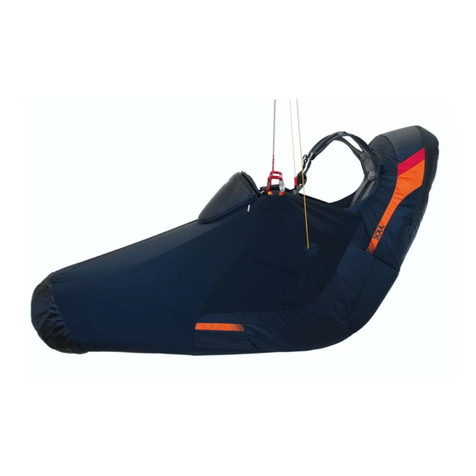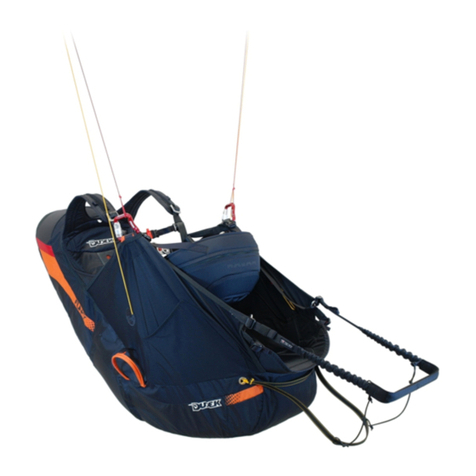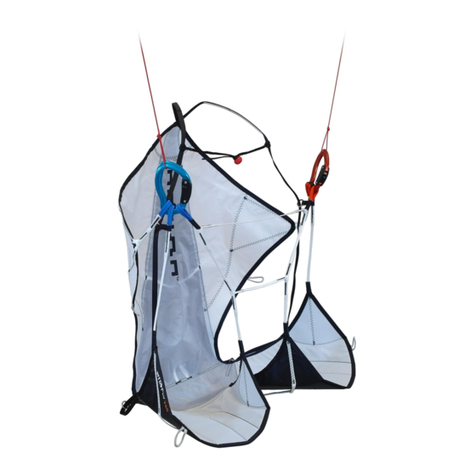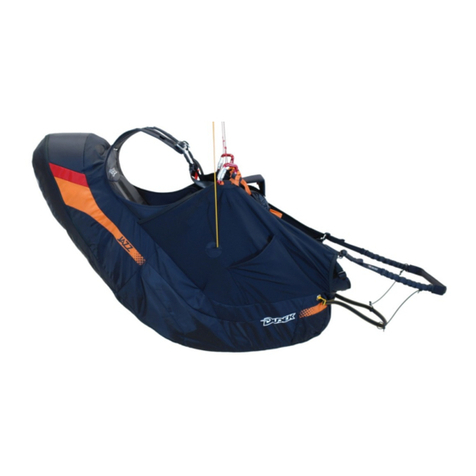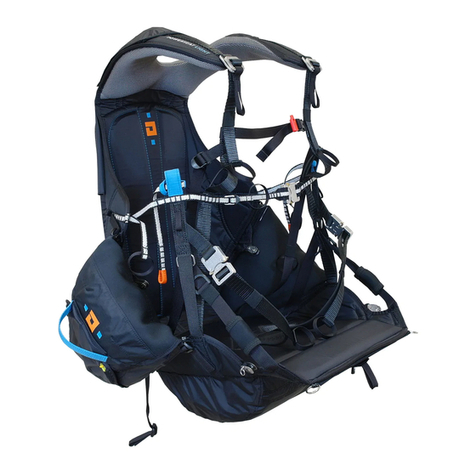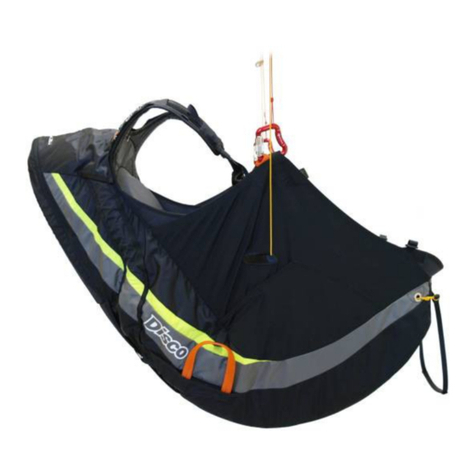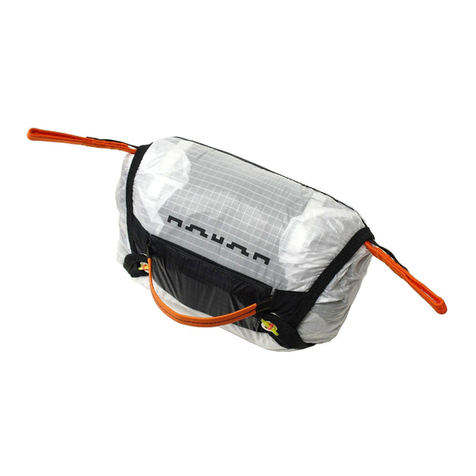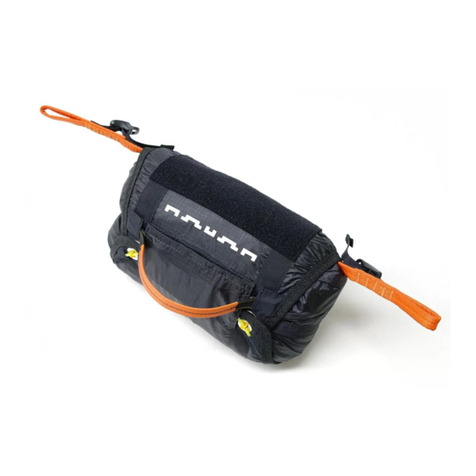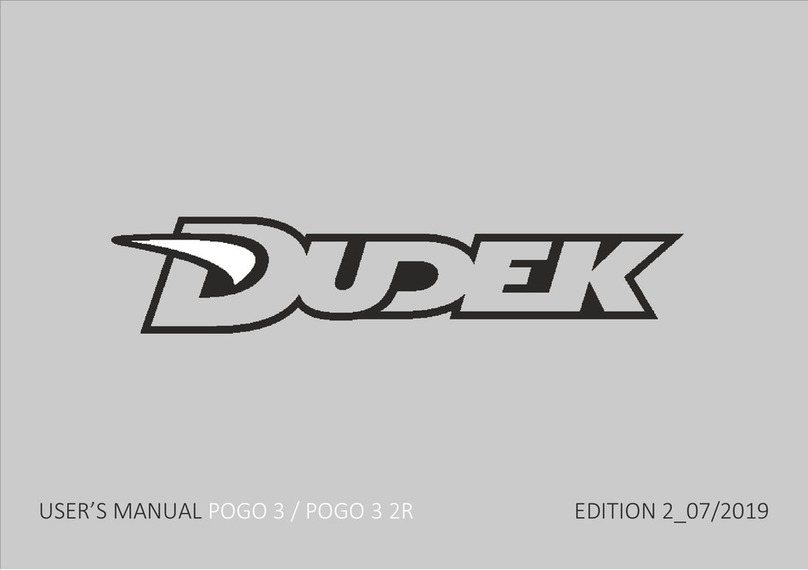Congratulations !
Thank you for choosing the Powerseat Comfort harness. We have done our best to present you with highest uality product, fulfilling all
safety re uirements and offering maximum functionality.
Please read this manual carefully before using the harness for the first time. This will help you utilize all features provided by the
Powerseat Comfort, thus increasing comfort and joy of each flight.
We wish you a lot of safe and enjoyable airtime!
Contents
1. Safety 2
2. Description 2
3. Additional e uipment 3
4. Installing the rescue chute 4
5. Speedbar 6
6. Cockpit 7
7. Frontcontainer 7
8. Harness/paramotor assembly 8
9. Harness/paraglider connection 10
10. Harness adjustment 11
11. Pockets 12
12. Before flight 12
13. Using the rescue chute 12
14. Landing 13
15. Waterlanding 13
16. Tandem flying 13
17. Clearing and storing the harness 13
18. Operation and repairs 13
19. Technical data 13
1. Safety
Paragliding is a potentially hazardous sport. When flying a paraglider you have to accept risks of injury and/or even death. Incompetent
or improper use of the harness may increase those risks. In case of any doubts please ask your dealer or manufacturer.
Dudek Paragliders do not bear any responsibility for damages or injuries resulting from paragliding activities.
2. Description
When working on the harness we took into consideration all suggestions - those of the test pilots, regular users and paramotor
manufacturers. Our main task was to keep high comfort of operation without increasing weight. Powerseat Comfort is designer for both
novice and experienced PPG pilots. It can be used for both high and low highpoints harnesses. It is suitable for any powered paraglider
(if the manufacturer will not indicate otherwise). Wide adjustment range allows the harness to fit any pilot's needs. Strap system offers
safety and stability, yet leaves plenty of space for starting run, effective steering and full exercise of the glider's capabilities. Harness is
ready for using the speedsystem.

